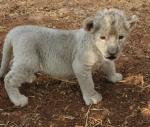You are here
Afforestation and reforestation for a sustainable environment
Sep 23,2023 - Last updated at Sep 23,2023
Afforestation refers to the establishment of forests in areas where there existed no forests previously or where the forest cover has been absent for a long time. It involves planting trees in barren or non-forest lands to create entirely new forest ecosystems often for environmental benefits such as carbon sequestration, aesthetics, soil protection, and biodiversity enhancement. Reforestation, on the other hand, involves replanting areas that were once forested but have been cleared or degraded. The aim of reforestation is to restore or rehabilitate a previously existing forest ecosystem that may have been damaged due to logging, wildfires, or other disturbances. In this article we shall investigate the impact of both afforestation and reforestation on a sustainable environment.
Clearing forests for urban expansion has several environmental consequences, including habitat loss for wildlife, reduced carbon sequestration capacity, changing local climates, increased heat islands and vulnerability to natural disasters like flooding. The United Nations estimates that over half of the world's population now lives in urban areas, and this percentage is expected to continue rising. The exponential population growth has also led to deforestation, habitat loss, and increased greenhouse gas emissions. Industrialisation and urbanisation needed to accommodate and feed an ever growing population have contributed to climate change, loss of cultural and historical sites, social displacement and environmental degradation.
As cities and urban areas expand, forests on the outskirts are often cleared to accommodate housing, industry and infrastructure. According to data from the United Nations, in 2018, approximately 55 per cent of the world's population lived in urban areas, and this is projected to increase to 68 per cent by 2050, probably more in underdeveloped countries. This ongoing urbanisation exerts pressure on nearby forests. The rate of urban expansion and associated forest loss varies by region. For example, in rapidly developing countries like China and India, urbanisation has led to substantial forest conversion. In Jordan, forests and wooded lands accounted few decades back for around 1-2 per cent of Jordan's territory, now we hear of a percentage less than one, which causes serious concerns.
Many cities and regions are implementing strategies to mitigate the negative impacts of urban expansion on forests. This includes green infrastructure planning, afforestation and reforestation programmes within cities, and the preservation of green belts around urban areas to serve as buffers against forest loss. Singapore is known for its extensive greenery within the city, often referred to as the "City in a Garden". Curitiba, a city in Brazil, has established a green belt surrounding the urban area preventing the encroachment of the city into adjacent forests. Vienna maintains extensive urban forests and green corridors within its boundaries for recreation and enhancing air and water quality, temperature regulation, and biodiversity conservation. Tokyo promotes green roofs as part of its urban planning efforts which helps reduce heat island effects, improve air quality, and provide urban residents with access to green spaces.
Climate change can also exacerbate deforestation rates. Over the past few decades, there has been a noticeable increase in the frequency and intensity of forest fires globally. Rising temperatures, prolonged droughts, and increased pest infestations can weaken forests, making them more vulnerable to wildfires and diseases. As conditions become less suitable for specific tree species in their current locations, they may migrate to higher latitudes or elevations, leading to local deforestation. Weak law enforcement, corruption and bad governance can allow these activities to persist. Forest fires can have devastating effects on ecosystems, biodiversity, air quality, and human health. They can also contribute to carbon emissions and climate change.
In some cases, forests are intentionally set on fire for various reasons, including agricultural practices like slash-and-burn agriculture, known in the Far East as grey clouds, such as in Indonesia, and is well known in Egypt too. These fires can quickly get out of control and lead to extensive deforestation. For example, in 2020, an individual in California was arrested for allegedly starting multiple wildfires intentionally. Land clearing for investments is another reason, illegal logging and arson for political and ideological motives like what happens in Palestine. In Jordan arson is often practiced to use the wood in winter for heating. Although forests are protected by law in many countries, arson can be a method for changing land use and should be fiercely punished.
Agricultural expansion, farming and logging are other drivers of deforestation to meet greater demand for food and cash crops like soy, palm oil and cattle ranching. The Amazon rainforest, particularly in countries like Brazil, has experienced extensive deforestation due to the expansion of soybean cultivation and cattle ranching. In Jordan we often see sheep damaging tree barks that requires guarding, awareness and community cooperation. The construction of roads, highways, and infrastructure projects, such as dams and mining operations, can also lead to deforestation. The extraction of minerals, oil and natural gas often requires clearing forests; examples are evident in Brazil, Peru, Congo, Indonesia, Ghana, Malaysia, Philippines and Australia.
The global demand by consumers in distant countries indirectly contributes to deforestation through their purchases of these products. For example many consumers worldwide buy products containing palm oil, such as snacks, cosmetics and cleaning agents. A significant portion of global palm oil production occurs in countries like Indonesia and Malaysia, where large-scale deforestation and habitat destruction have taken place to make way for palm plantations. Again, demand for beef in various countries leads to deforestation in places like the Amazon rainforest. Cattle ranching often involve clearing forests for pastureland, impacting biodiversity and releasing stored carbon.
In conclusion, sustainable urban planning practices, such as compact city design minimising urban sprawl, creating space for residents to walk and cycle or use public transportation, reducing the need for private car use and, consequently, limit road expansion into forests. Such practices, among others, can help reduce the extent of forest clearance for urban growth as it aims to accommodate population growth while minimising environmental impacts. Many cities and regions are implementing strategies to mitigate the negative impacts of urban expansion on forests and farming land. This includes green infrastructure planning, afforestation and reforestation programmes within cities, and the preservation of green belts around urban areas to serve as buffers against forest loss and desertification.
Ayoub Abu Dayyeh is an energy and green building consultant













